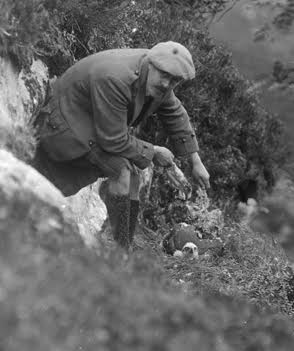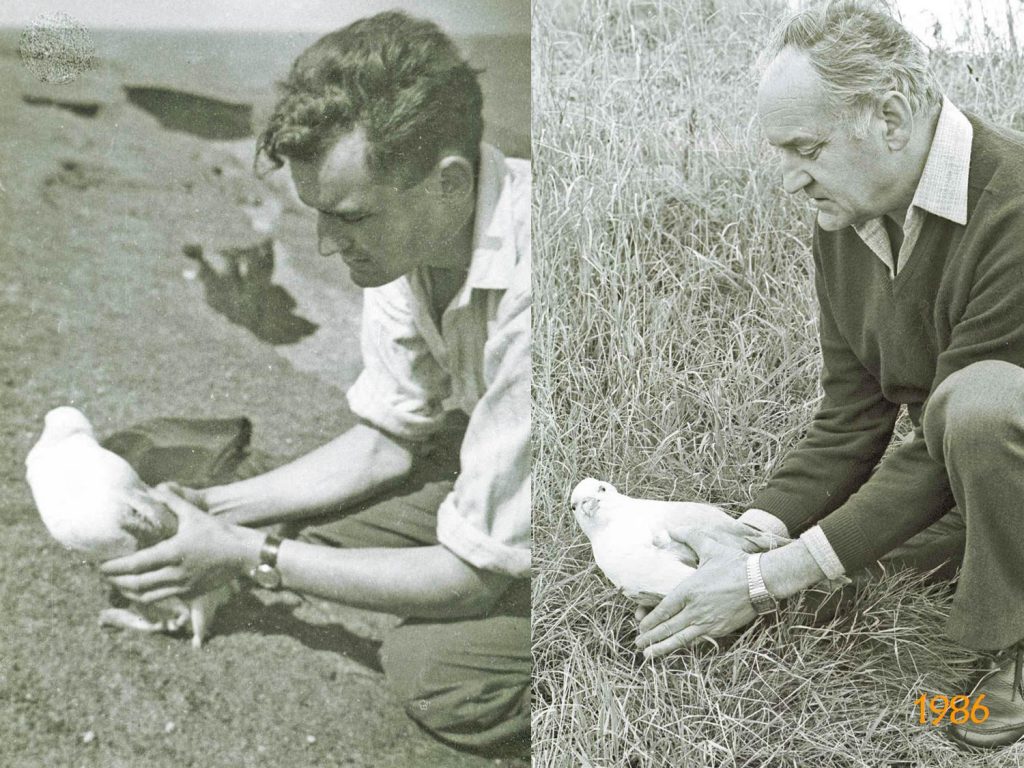Curracag – the Outer Hebrides Natural History Society – held their first indoor meeting of 2019 in the Dark Island Hotel on 8 January. The speaker was John Love who has been a member since the Society’s inception. Based in South Uist, John was formerly an Area Officer for Uist, Barra and St Kilda with Scottish Natural Heritage, also a former Chairman of Curracag and, for several past issues, editor of their journal Hebridean Naturalist. Appropriately his talk was about Highland Naturalists, tending to focus on the Hebrides with a selection of home-grown individuals and a few other notable characters.
The Hebrides has long been a fertile stamping ground for naturalists from home and ‘abroad’ and John began his talk with Skyeman Martin Martin, a tutor to the Macleods of Dunvegan who visited the remote archipelago of St Kilda back in 1697. His popular book on the voyage was soon followed up with another on subsequent visits to many other Hebridean islands, both Inner and Outer. One has to bear in mind that his travels took place only five years before the Massacre of Glencoe and also before the ill-fated Jacobite Rebellions. Martin wrote how these islands had never before been ‘described till now by any Man who was a Native of the Country’. Indeed he went on to lament how ‘foreigners sailing through the Western Isles have been tempted from the sight of so many hills that seem to be covered all over with heath and faced with high rocks, to imagine the inhabitants, as well as their places of residence, as barbarous; to this opinion their habits, as well as their language, have contributed.’
Being a native Gaelic speaker he was able to glean from his fellow islanders a wealth of folklore, natural history, traditions, customs, cures and remedies that would otherwise now be forgotten. ‘In the course of my Travells,’ he went on, ‘anything that was remarkable fell under my Observations’ . . . ‘the field of Nature is large, and much of it wants still to be cultivated.’
After the ’45, travel through the Highlands and Islands became easier and even the elderly Dr Samuel Johnson was able to journey extensively in 1772. An eminent naturalist of the 19th century was William MacGillivray. Born in Aberdeen but raised in Northton, Harris, MacGillivray later walked all the way to attend university semesters in Aberdeen. He claimed ‘the solitude of nature was my school’ and how he had ‘reaped most advantage from solitary travelling.’ He even walked all the way to London to visit its Natural History Museum and went on to become a museum curator himself first in Edinburgh then assuming the Chair of Natural History back in Aberdeen. MacGillivray wrote many scholarly books and was well known for leading his students ‘to take to the fields and the woods, the mountains and shores, there to examine for themselves the rich profusion of nature.’ Indeed, it was said, he frequently walked ‘the most active of them into a state of limp helplessness’.
John Love himself gained his degree in natural history at Aberdeen where he first encountered the name and exploits of William MacGillivray. William was also an accomplished artist and many of his fine bird paintings are now in the Natural History Museum.
Our speaker went on to highlight other distinguished naturalists who shared a profound interest in the Highlands such as JA Harvie-Brown, Seton Gordon, Robert Atkinson, Frank Fraser Darling and J Morton Boyd – all greatly influencing him as a youngster. On joining the Inverness Bird Club in 1959, he was to meet Seton Gordon himself, Morton Boyd – who would later become his boss in NCC/SNH, George Waterston and Lea MacNally – all eagle enthusiasts. George was then Scottish Director of the RSPB who inspired John to volunteer at the Loch Garten Osprey hide in the summers of 1963/64. Lea MacNally was a stalker/naturalist in Fort Augustus who went on to take some wonderful photos and write several books about Highland wildlife.

From his schooldays John was mentored by two birdwatchers in particular. Dr Maeve Rusk was an ophthalmic surgeon at Raigmore Hospital who held regular clinics in the Hebrides. She was president of the local Bird Club, took John on her monthly duck counts and taught him how to mist-net and ring birds. The Club secretary was Inverness Police Inspector James MacGeoch, a keen photographer and island enthusiast. At the time MacGeoch was Honorary Warden for North Rona and Sulaisgeir National Nature Reserve and had recorded on film the famous Gannet or Guga hunt by the men of Ness. Sadly Jimmy died soon after retiring from the police but Maeve died in 2011 aged 93. Recently, with the MacGeoch family and his friend Dr Finlay Macleod from Ness in Lewis, John was able to see MacGeoch’s classic photographs of the guga hunt published by Acair. North Rona was to feature prominently in John’s island experiences, ringing Leach’s Petrels, one of which was retrapped there no less than 30 years later. From his time in Rum John became good friends with Dr John Lorne Campbell, the eminent Gaelic scholar and folklorist from Argyll; it is less well known that he was a passionate lepidopterist and planted many trees to create wildlife habitat on the Isle of Canna which he bought in 1938.
In 1975 John became involved in the White-tailed Sea Eagle Reintroduction Project on the Isle of Rum – championed by Morton Boyd, encouraged by Roy Dennis and George Waterston, and assisted throughout by a host of others. Shetlander Bobby Tulloch typically provided John with a couple of amusing anecdotes in his talk. As did Professor George Dunnet from Caithness who, as lecturer at Aberdeen University, initiated a long-term study of fulmars in Orkney. John showed a photo of George handling the first fulmar he ringed there in 1951 and then another taken in 1986 as he held the very same bird – it looked exactly the same but George had not weathered quite so well!

John could not end his talk without mentioning Murdo MacRury from South Uist who became the first Nature Conservancy warden at Loch Druidibeg. Also two redoubtable naturalists (and columnists in the local Press), Peter and Andrew Currie. There are many others of course it was clear at the end of the evening that not only have the Highlands, and the Hebrides in particular, attracted many fine naturalists over the centuries but they have also generated many of their own. John just felt fortunate to have encountered a few of them in his own lifetime.